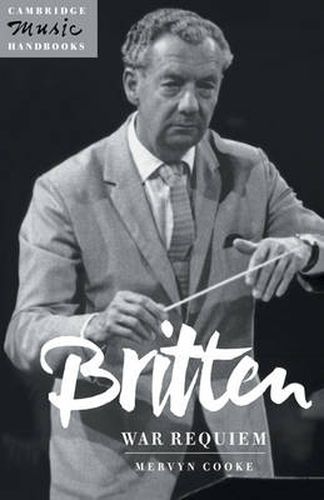Readings Newsletter
Become a Readings Member to make your shopping experience even easier.
Sign in or sign up for free!
You’re not far away from qualifying for FREE standard shipping within Australia
You’ve qualified for FREE standard shipping within Australia
The cart is loading…






Widely regarded as one of the greatest choral works of the twentieth century, Britten’s War Requiem was first performed at the consecration of the new Coventry Cathedral in 1962. It provocatively juxtaposes the vivid anti-war poetry of Wilfred Owen with the Latin Requiem Mass in a passionate outcry against man’s inhumanity to man. This handbook explores the background to Britten’s use of the Owen texts, charting the development of the composer’s lifelong pacifist beliefs and (in a chapter contributed by Philip Reed of the Britten-Pears Library, Aldeburgh) detailing the process of composition from hitherto unpublished correspondence and manuscript sources. The musical structure is investigated, and the work’s compositional idiom related to Britten’s output as a whole. A concluding chapter surveys the fluctuating critical responses to the score, and includes discussion of the composer’s legendary 1963 recording and Derek Jarman’s controversial interpretation on film.
$9.00 standard shipping within Australia
FREE standard shipping within Australia for orders over $100.00
Express & International shipping calculated at checkout
Widely regarded as one of the greatest choral works of the twentieth century, Britten’s War Requiem was first performed at the consecration of the new Coventry Cathedral in 1962. It provocatively juxtaposes the vivid anti-war poetry of Wilfred Owen with the Latin Requiem Mass in a passionate outcry against man’s inhumanity to man. This handbook explores the background to Britten’s use of the Owen texts, charting the development of the composer’s lifelong pacifist beliefs and (in a chapter contributed by Philip Reed of the Britten-Pears Library, Aldeburgh) detailing the process of composition from hitherto unpublished correspondence and manuscript sources. The musical structure is investigated, and the work’s compositional idiom related to Britten’s output as a whole. A concluding chapter surveys the fluctuating critical responses to the score, and includes discussion of the composer’s legendary 1963 recording and Derek Jarman’s controversial interpretation on film.